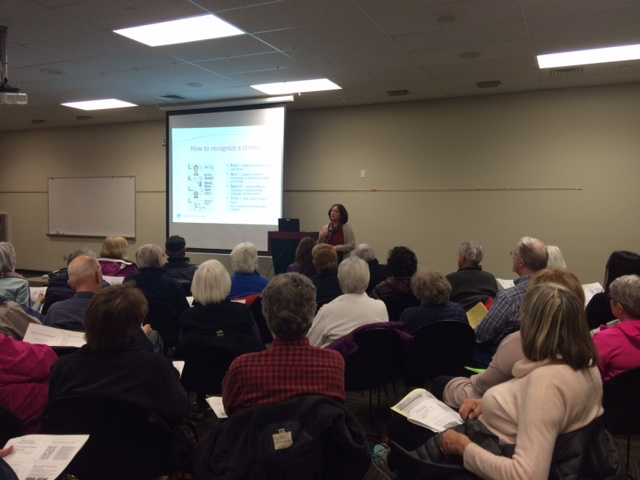Stroke: 'Women Face a Higher Risk'
- Category: General, Neurology/Neurosurgery
- Posted On:
- Written By: Boulder Community Health

Did you know that women face a higher risk of stroke than men? In fact, stroke is the No. 4 killer of women.
“Women make up more than half of the nearly 800,000 people in the U.S. who have a stroke each year. Many are left disabled. Others have their lives cut tragically short,” said Becky Hildebrand, the coordinator of BCH’s award-winning stroke program, during a free Go Red for Women lecture held on Feb. 7 at the Lafayette Public Library.
What’s more, strokes aren’t just an old-person problem.
“The truth is, stroke affects women of all ages, especially those in midlife. The number of women ages 45 to 54 being afflicted by stroke is increasing,” she warned.
The good news is that simply understanding their unique risk factors and recognizing symptoms can empower women to prevent and treat stroke before they suffer serious complications.

Identify your modifiable risk factors
Both women and men share many of the same risk factors. According to Hildebrand, up to 80 percent of all strokes are preventable through managing these risks:
- Hypertension (the No. 1 risk factor)
- Heart disease
- Diabetes
- Cigarette smoking
- Elevated cholesterol
- Alcohol
- Physical inactivity
- Obesity
A few other factors put women at higher risk for stroke:
- Birth control pills, especially with high blood pressure
- Hormone replacement therapies for menopause relief
- Migraines with aura and smoking
- Pregnancy and preeclampsia (or high blood pressure)
- Atrial fibrillation (type of irregular heartbeat)
Hildebrand said women should talk to their health care provider about how to lower their risk if they have one of the above risk factors.
Warning signs
“Signs of stroke in women and men are similar. Yet few women recognize the subtler warning signs. They sometimes have more vague complaints,” Hildebrand explained.
Warning signs include:
- Sudden drooping to ONE side of face
- Sudden numbness or weakness of ONE arm or leg
- Sudden confusion or trouble understanding
- Sudden trouble seeing in one or both eyes
- Sudden trouble walking, dizziness, loss of balance or coordination
- Sudden severe headache with no known cause
Time is of the essence
Research shows that patients who take a clot-busting drug within three hours of their first stroke symptom can reduce long-term disability. Therefore, it’s crucial to get to the emergency room quickly.
“Two million brain cells may die every minute during an untreated stroke. When it comes to recovery, time is of the essence,” Hildebrand said. “If you think someone is having a stroke, immediately call 9-1-1 or the Emergency Medical Services number. Also, check the time so you’ll know when the first symptoms appeared.”
BCH is a primary stroke center
BCH has been awarded Advanced Certification as a Primary Stroke Center by The Joint Commission and the American Heart Association/American Stroke Association.
To learn more about our primary stroke center, click here.